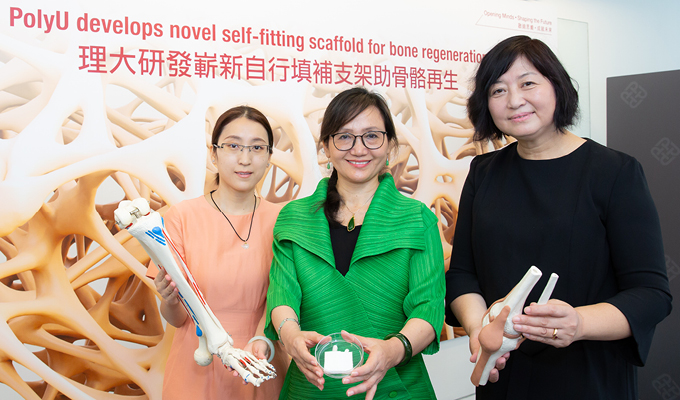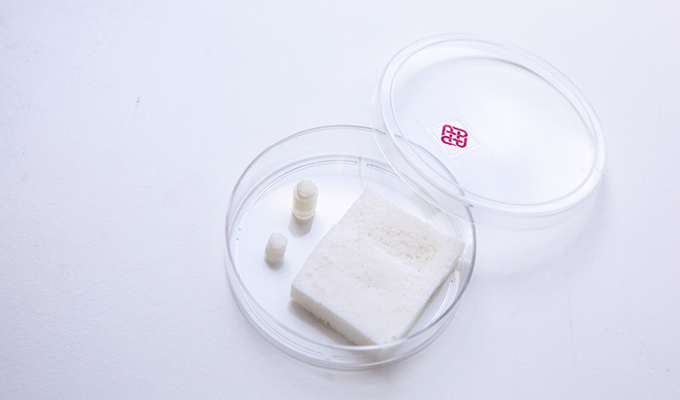

Bone fracture is a growing health problem in ageing societies. A recent study projected that the number of annual new cases of hip fractures from osteoporosis in Hong Kong of 9,590 this year, will be tripled by 2050, while Malaysia and Singapore will reach 3.5 times during the period.
In view of this, a team of researchers led by Prof. Hu Jin-lian and Dr Xie Rui-qi from the Institute of Textiles and Clothing, and Dr Guo Xia from the Department of Rehabilitation Sciences have developed a novel bone scaffold that can improve the bone grafting process and induce bone regeneration effectively.
Made of shape memory polyurethane foam and hydroxyapatite, the bone scaffold can be compacted at 0°C and implanted at room temperature. Once implanted, the scaffold can be stimulated by heat to expand and fill the irregular boundary of bone defects. Such shape memory and self-fitting features of the bone scaffold make it feasible for application in minimally invasive operations.
In addition, with a highly porous structure consisting of interconnected pores, the bone scaffold allows cells migration and the formation of new tissues. It also has the advantages of full biocompatibility, optimal mechanical properties and optimal structure for bone remodeling.
A rabbit femoral defect study conducted by the research team showed promising results of the bone scaffold in facilitating bone regeneration. Details>>